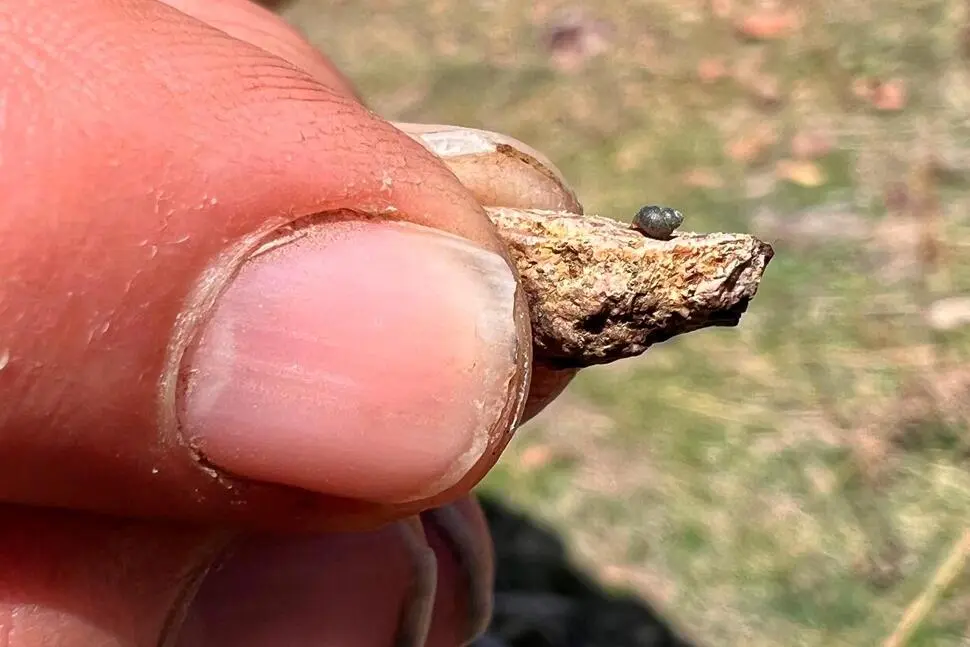Environmentalists Urge Investigation into Lithium Mine’s Impact on Rare Nevada Snail
RENO, Nev. (AP) — Opponents of the largest lithium mine currently under construction in the U.S. are calling for an investigation into the potential environmental damage caused by the project in Nevada. Their concerns are centered on the Kings River pyrg, a tiny snail that is now being considered for endangered species protection. Environmentalists and Native American groups argue that the mine, which spans approximately 9 square miles (23 square kilometers) at Thacker Pass, may be depleting local groundwater, a resource crucial to the snail’s survival.
These concerns are being raised after new data surfaced suggesting that the construction of Lithium Americas’ open-pit mine might already be affecting the area’s water levels. According to a report from Payton Gardner, an assistant professor of hydrogeology at the University of Montana, a nearby well has seen a nearly 5-foot (1.5-meter) drop in water levels since 2018. This could have devastating consequences for the delicate ecosystem that sustains the Kings River pyrg, which exists in just 13 isolated springs around the mine site.
Despite this alarming evidence, Nevada regulators have yet to confirm any link between the mine’s activities and declining groundwater levels. State officials have promised to continue monitoring the situation, but environmental groups like the Western Watersheds Project and People of Red Mountain are not satisfied. They argue that the federal government, particularly the U.S. Fish and Wildlife Service, has failed to protect the snail by delaying its decision on whether to list it as threatened or endangered, as requested in 2022.
A Tiny Snail’s Big Struggle for Survival
The Kings River pyrg, no larger than a grain of rice, is the only species of its kind and lives exclusively in these fragile springs. The snail’s survival is intricately tied to the groundwater system that feeds the springs, and even minor disruptions to this system could cause the springs to dry up. Paul Ruprecht, Nevada Director for Western Watersheds Project, warned, “Even slight disruptions to its habitat could cause springs to run dry, driving it to extinction.”
This concern comes after the Federal Court and an appeals court recently dismissed an earlier attempt by Native American tribes to protect the land as sacred, an area where U.S. troops massacred dozens of their ancestors in 1865. Now, as the snail faces the looming threat of extinction, these tribes and environmental groups are doubling down on their calls for federal action.
The Lithium Rush and its Impact on the Environment
Lithium, a critical metal for the production of electric vehicle batteries, is in high demand. President Joe Biden has made increasing the production of electric vehicles a central part of his administration’s energy agenda. As a result, Nevada, which holds vast lithium reserves, has become a hotspot for mining operations like the one at Thacker Pass. Last year, the U.S. Energy Department provided Lithium Americas with a loan exceeding $2 billion to help finance the project, and a recent joint venture with General Motors will further accelerate its progress.
While the lithium industry promises economic growth, its rapid expansion comes with environmental risks, particularly when it intersects with sensitive ecosystems. The Thacker Pass mine is the largest and closest to completion in the U.S., with others like Ioneer’s Rhyolite Ridge project also under development nearby.
Groundwater Concerns and Regulatory Oversight
The potential for groundwater depletion in the area has raised alarms. Reports from Lithium Americas’ environmental consultant show that the company no longer has access to private lands where several key monitoring wells are located. This loss of access complicates efforts to track the potential impacts of the mine on local water supplies. However, the Nevada regulators have made adjustments to the monitoring plan for 2024 to accommodate these changes.
The mine’s approval from the Bureau of Land Management (BLM) acknowledges that some reduction in groundwater levels could occur, but the BLM does not expect significant changes for several decades, primarily if the company seeks permission to dig below the water table.
A Call for Action
Despite these assurances, opponents of the mine fear that the Kings River pyrg could become yet another casualty of the growing lithium boom, losing its battle for survival as industrial development continues to encroach on its habitat. They are calling on federal authorities to take immediate action, including investigating the mine’s impact on groundwater and expediting a decision on the snail’s endangered species status.
Lithium Americas has consistently defended its project, pointing to data that it claims shows no risk to the snail or other local wildlife. Tim Crowley, a spokesperson for the company, described the latest objections as attempts to “re-spin issues that have already been addressed and resolved in court,” adding that the company has collected ten years of data to show that the mine will not harm the snail.
However, for environmentalists, Native American groups, and those advocating for the survival of the Kings River pyrg, the stakes couldn’t be higher. The outcome of this battle could have lasting consequences not only for a rare species but for the broader debate over how the U.S. balances its push for renewable energy with the protection of its natural heritage.
